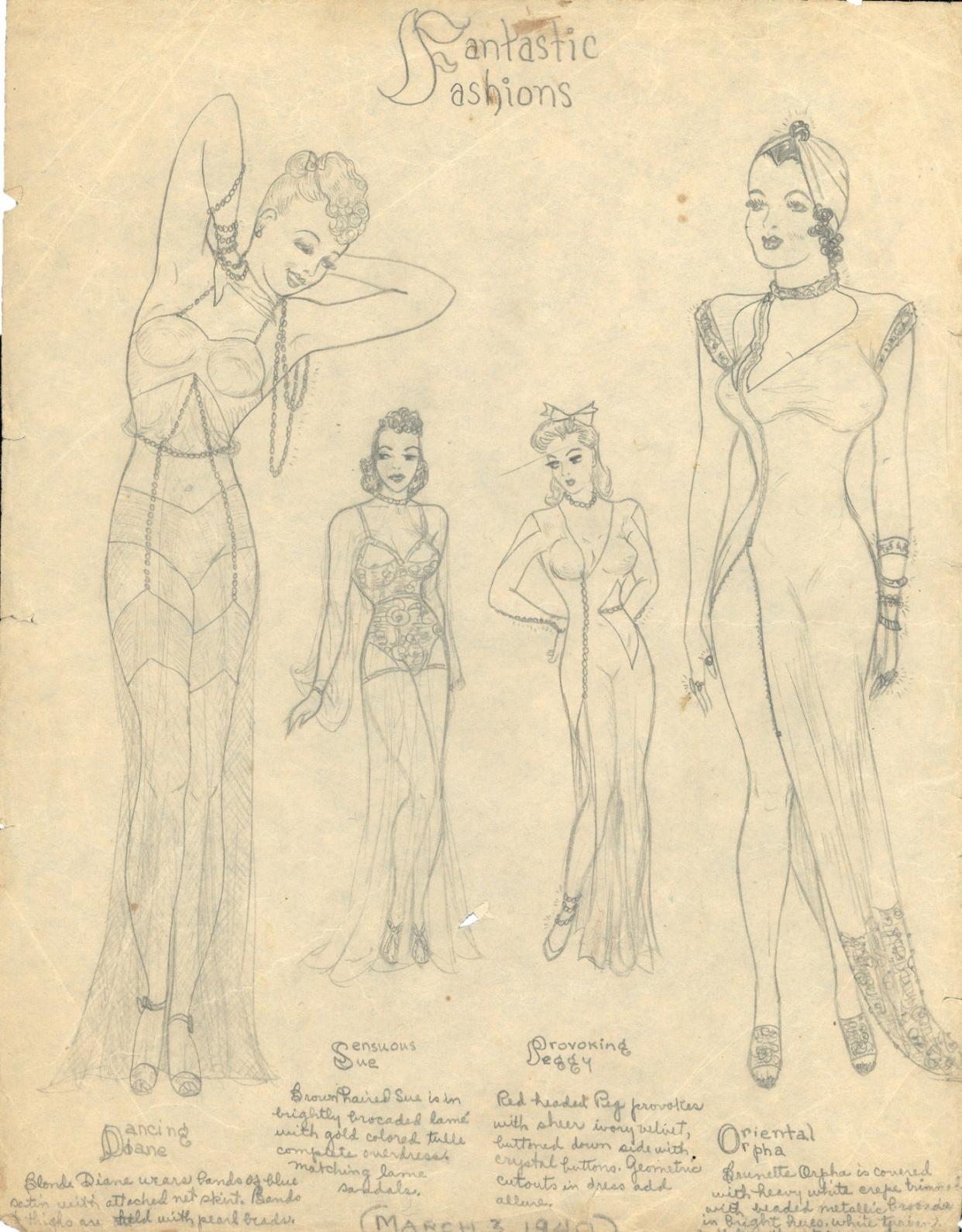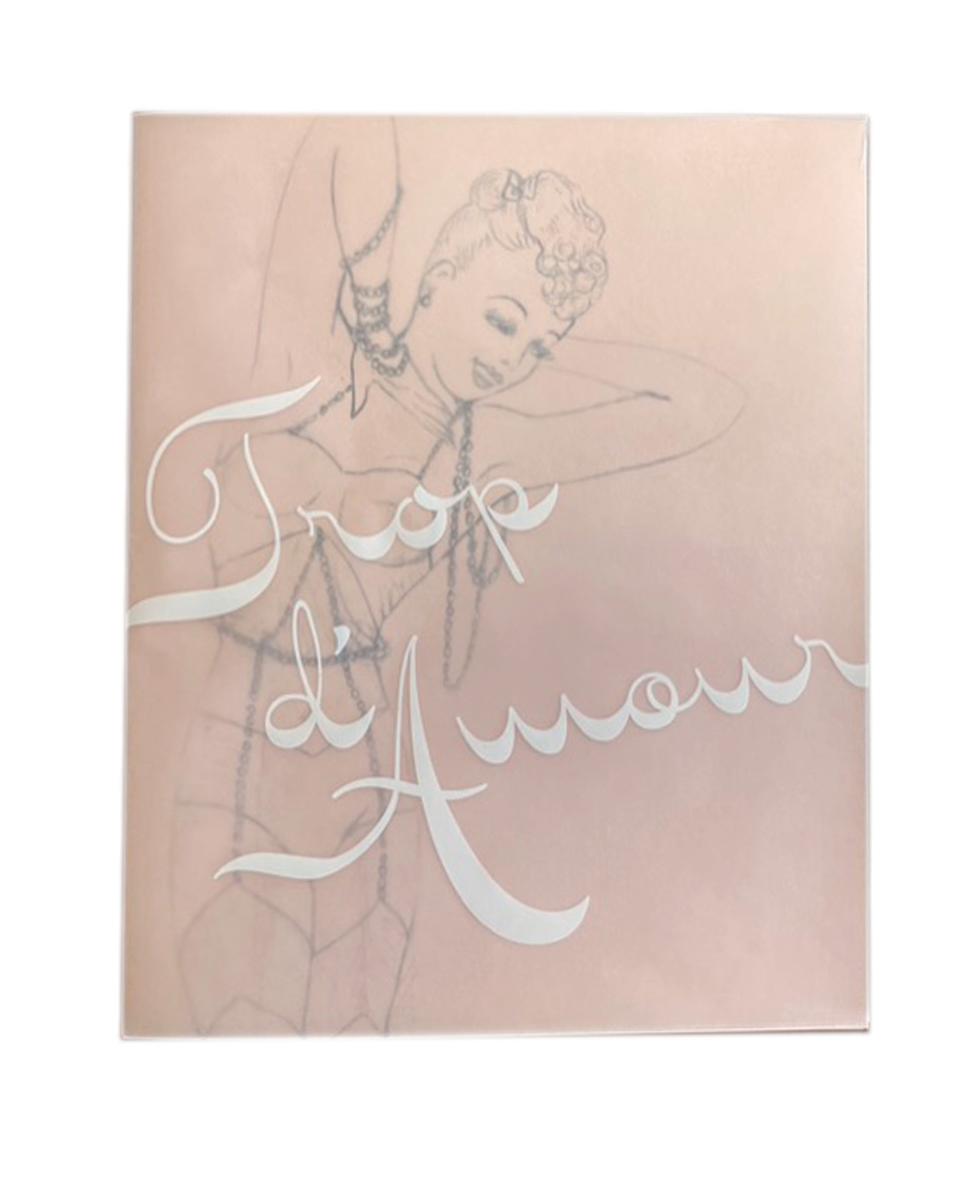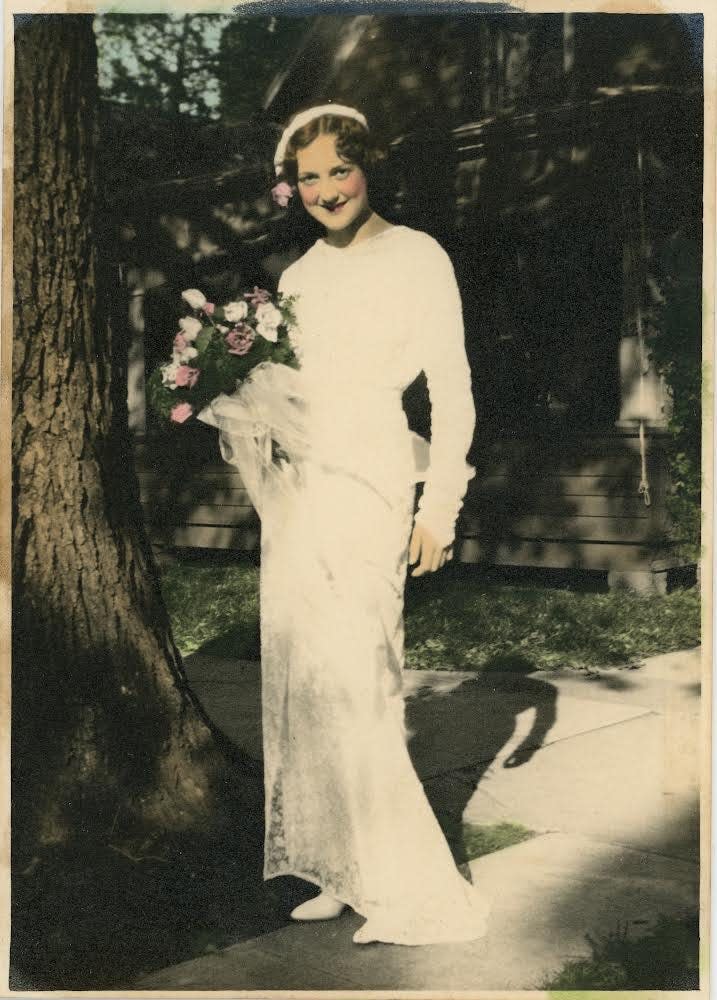A 1930s housewife's sexy sketches are finding a new audience thanks to her granddaughter

Digging through a box of her late grandmother's piano music, mixed in with movie themes and show tunes, Mindy Brancamp of Beloit found a plain folder with "page after page of drawings of beautiful women in various fashions and lingerie."
That alone would be a powerfully unexpected legacy from Virginia Ahrens, who died in 1978. But wait, there's more.
"As I turned page after page, I was surprised at the detail, the movement of the flowing gowns and the women themselves. Some bending, some stretching, some dancing," Brancamp writes in her introduction to a new book of her grandmother's artwork.
"Also surprising was the sexuality, sometimes implied and sometimes bluntly stated in the title of the drawing or the name of the woman."
Consider a pair of drawings from 1934, the year Ahrens married at age 20. In a drawing dated April 3, "Virginia presents two women, holding hands, wearing sheer, lacy shrugs and skirts that frame their naked breasts and torsos," art critic and historian Debra Brehmer writes.
"The next day, April 4, 1934, she draws two naked dancers on a stage and labels the drawing 'Sallette and Salome, the Randall Sisters Fan Dance.' The Randall Sisters were a squeaky clean singing act that Virginia seemed to re-stage as burlesque performers," Brehmer writes.
Only a portion of Ahrens' 132 sketches are X-rated. But many express the richly sensual fantasy life of a young Prairie du Chien housewife who would have had no sanctioned venue in the 1930s and '40s for such artwork.

Portrait Society Gallery, which is exhibiting the Ahrens drawings through Aug. 5 under the title "Trop d'Amour" ("Too Much Love"), is also publishing a limited edition catalog of the work, with Brancamp's introduction and an essay by Brehmer, the gallery owner. The gallery will host a book launch event Aug. 4.
A specialist in vernacular and self-taught artists, Brehmer believes there are few bodies of work like this anywhere.
"The simplicity of the pencil drawings belies their cultural significance," she writes. "Virginia left us a gift: Evidence that women thought about sex through their own gaze, separate from the definitions, protocol, and desires of men."
The Kinsey Institute at Indiana University, which holds a large collection of sex-related material, told Brehmer it has nothing in its archives like Ahrens' drawings.
She relished the power of beautiful clothing
The first drawing comes from 1930, when Virginia Rae Marvin was a 16-year-old in Prairie du Chien. During this same period, she kept a diary, where she wrote about encounters with her boyfriend and future husband Lennie Ahrens in French, hiding the meaning of her words from prying eyes. After one movie date with Lennie, Virginia wrote "une heure du matin — peau à peau et plus!": "one o'clock in the morning — skin to skin and more!"
Virginia and Lennie married in 1934, when she was 20. That same year, Brehmer writes, her drawings become both more frequent and sexier. Their sensuality was not limited only to the bodies glimpsed.
"She reveled in her descriptions of fabric," Brehmer writes. "Satin, moss green chiffon, brocade, velvet, apricot lamé, crêpe, lace, pale blue net, green silk. She envisioned the draping and ruching, pleating, puckering, and frills. These are the dreams of a seamstress who relishes the power of beautiful clothing, the staging of self, who understands the theatrical production of seduction, and the way clothes define character."

"I think the clothing was as important if not more important to her than the women," Mindy Brancamp said in a recent interview. Brancamp remembers her grandmother as someone who always dressed nicely when she visited.
Virginia Ahrens designed and sewed her own wedding dress, which is on display at Portrait Society Gallery with her artwork. Brancamp said her own daughter considered wearing it for her wedding, but didn't want to alter Virginia's exquisite work.
Brehmer's essay pinpoints Butterick, Vogue and Simplicity patterns as the most likely sources of Ahrens' drawing style, along with newspaper fashion advertisements (which were illustrations rather than photos in that time period).
There's a strong fantasy element to the rich clothing designs: Ahrens made her drawings during the Great Depression and World War II, when economic restrictions limited many choices in daily life.
Brancamp also believes her grandmother's drawings were also strongly influenced by the many movies Virginia saw back then, with glamorous stars such as Jean Harlow.
The volume of her drawings tapered off after 1935, but she continued until 1947. Raising two children, she played the piano and kept sewing her own stylish clothes, but her husband's traveling sales job meant she was often lonely. Increasingly, she turned to alcohol. Brancamp said her mother Donna, Virginia's daughter-in-law, took the artist to rehab facilities in Milwaukee a couple of times, but Ahrens died at age 64 from an alcohol-related fall that resulted in a head injury.
Viterbo instructor encouraged her to show the art
Not long after she discovered her grandmother's drawings, Brancamp was taking an elective art class at Viterbo College (now Viterbo University) while earning her nursing degree. For an assignment to research and report on an individual artist, instructor Jay Salinas encouraged Brancamp to write about her grandmother.

A few years later Salinas, who is also a leader of the Wormfarm Institute in Reedsburg, encouraged Brancamp to consider exhibiting them. Supported by her mother Donna, Brancamp showed them at a Reedsburg gallery in 2000, followed by exhibits in La Crosse and Kansas City. Salinas also introduced the work to Brehmer.
Brancamp has sold a few drawings to fund publication of the book. A few will go to family members. But the family hopes that the bulk of the drawings will find a home together in a museum or similar institution.
She has dedicated preservation and publication of the drawings to her mother Donna, who died in 2021. Donna "would have been thrilled that Virginia’s work was being shown and that Virginia’s talent was being valued," Brancamp writes.
If you go
Portrait Society Gallery will host a book launch celebration for "Trop d'Amour" by Virginia Ahrens from 4 to 6 p.m. Aug. 4 at 207 E. Buffalo St., 5th floor. For information, visit portraitsocietygallery.com.
This article originally appeared on Milwaukee Journal Sentinel: Virginia Ahrens' sensual fashion fantasies find a new audience

